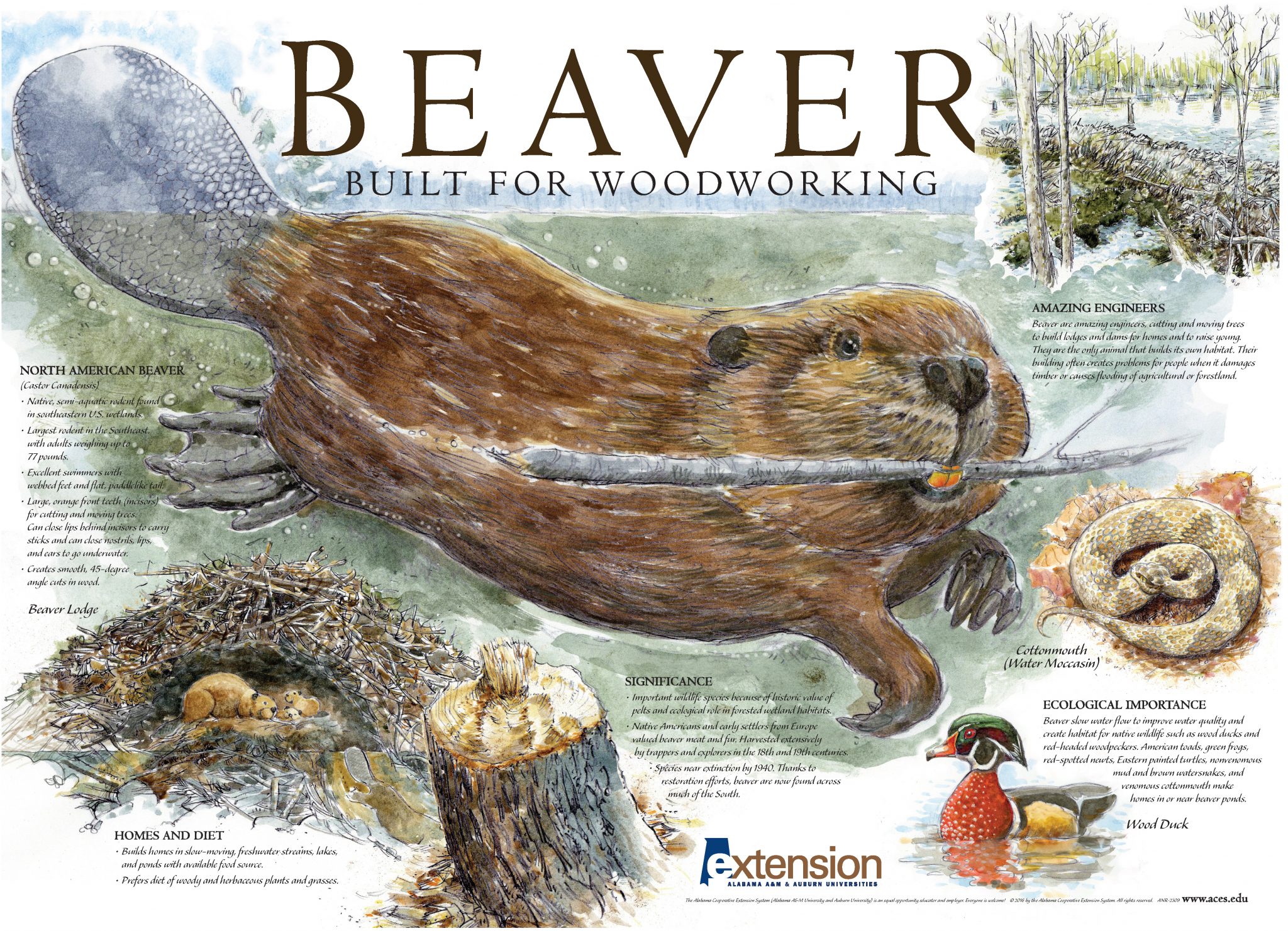Forestry & Wildlife

North American Beaver (Castor Canadensis)
- Native, semi-aquatic rodent found in southeastern U.S. wetlands.
- Largest rodent in the Southeast, with adults weighing up to 77 pounds.
- Excellent swimmers with webbed feet and flat, paddlelike tail.
- Large, orange front teeth (incisors) for cutting and moving trees. Can close lips behind incisors to carry sticks and can close nostrils, lips, and ears to go underwater.
- Creates smooth, 45-degree angle cuts in wood.
Homes and Diet
- Builds homes in slow-moving, freshwater streams, lakes, and ponds with available food source.
- Prefers diet of woody and herbaceous plants and grasses.
Significance
- Important wildlife species because of historic value of pelts and ecological role in forested wetland habitats.
- Native Americans and early settlers from Europe valued beaver meat and fur. Harvested extensively by trappers and explorers in the 18th and 19th centuries.
- Species near extinction by 1940. Thanks to restoration efforts, they are now found across much of the south.
Amazing Engineers
Beaver are amazing engineers, cutting and moving trees to build lodges and dams for homes and to raise young. They are the only animal that builds its own habitat. Their building often creates problems for people when it damages timber or causes flooding of agricultural or forestland.
Ecological Importance
Beaver slow water flow to improve water quality and create habitat for native wildlife such as wood ducks and red-headed woodpeckers. American toads, green frogs, red-spotted newts, Eastern painted turtles, nonvenomous mud and brown watersnakes, and venomous cottonmouth make homes in or near beaver ponds.

